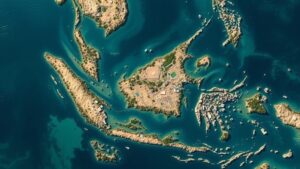Investigating freshwater ecosystems for rare river dolphins in South America.
Investigating Freshwater Ecosystems for Rare River Dolphins in South America
Freshwater ecosystems are among the most diverse and fascinating habitats on Earth, yet they remain critically threatened. One of the most enigmatic residents of these ecosystems is the river dolphin. In South America, species such as the Amazon river dolphin (Inia geoffrensis) and the La Plata dolphin (Pontoporia blainvillei) have captured the attention of researchers and conservationists alike. This article delves into the exploration and investigation of these unique freshwater environments to study and protect these rare river dolphin populations.
The Importance of River Dolphins
River dolphins play a crucial role in their ecosystems, acting as both apex predators and indicators of freshwater health. Like the canary in the coal mine, the state of river dolphin populations can reveal much about the ecological integrity of freshwater bodies. Their presence signals a balanced ecosystem, while their decline can indicate broader environmental issues such as pollution, habitat degradation, and climate change.
Research Locations and Historical Context
Key research sites for river dolphin populations include the Amazon River Basin and the Río de la Plata estuary. Amazon River Basin is not only the largest rainforest in the world but also one of the most biodiverse regions on the planet. The La Plata dolphin, on the other hand, inhabits the coastal and riverine waters from Brazil to Argentina, making it one of the most studied yet vulnerable species of river dolphins.
Historically, these regions have been inhabited by indigenous communities who relied on the rivers for sustenance, culture, and economy. With the arrival of industrial development in the late 20th century, these ecosystems began to face increased pressures, resulting in substantial habitat destruction and alterations in water quality.
Current Research Methodologies
Researchers employ a mix of traditional fieldwork and innovative technology to study these elusive creatures. Common methodologies include:
- Boat Surveys: Systematic boat surveys allow researchers to visually assess dolphin populations and their habitats.
- Acoustic Monitoring: Advanced sonar and hydrophone technologies are utilized to track dolphin movements and communication.
- Genetic Sampling: Collecting genetic material for analysis helps determine population structures and genetic diversity.
In 2022, a joint study by the University of São Paulo and the World Wildlife Fund documented the presence of over 3,000 Amazon river dolphins in a selected region of the Amazon, revealing a complex relationship between the dolphins and their habitat.
Challenges Facing River Dolphins
Despite growing awareness, river dolphins face numerous challenges that threaten their survival, such as:
- Pollution: Industrial runoff and plastic waste can significantly degrade freshwater habitats.
- Climate Change: Alterations in weather patterns threaten the availability and quality of freshwater sources.
- Fishing bycatch: Accidental capture in fishing gear remains a serious threat to river dolphin populations.
For example, a report from the Brazilian Institute of Environment and Renewable Natural Resources (IBAMA) noted a 30% increase in river dolphin deaths linked to entanglement in fishing nets in 2020, underscoring the need for sustainable fishing practices.
Conservation Efforts and Real-World Applications
In response to these challenges, numerous conservation programs have emerged across South America. Effective measures include:
- Protected Areas: Establishing and enforcing protected zones in critical dolphin habitats.
- Community Involvement: Engaging local communities in conservation efforts promotes sustainable practices.
- Awareness Campaigns: Efforts to educate the public about the ecological importance of river dolphins.
A notable example is the Mamirauá Sustainable Development Reserve in Brazil, where local communities work alongside conservationists to monitor and protect Amazon river dolphins while promoting ecotourism.
Next Steps: Moving Forward
As research into these freshwater giants continues, its clear that a multidisciplinary approach will be vital to ensure their survival. Future endeavors could include:
- Increased Funding: Continuous financial support for research and conservation projects.
- Policy Advocacy: Stronger regulations on water pollution and habitat conservation at both local and international levels.
Engaging various stakeholders–including governments, NGOs, and local communities–will facilitate more effective conservation strategies. By prioritizing river ecosystems, we not only protect river dolphins but also enhance the resilience of our planets freshwater resources.
Conclusion
Investigating freshwater ecosystems is essential for the conservation of rare river dolphins in South America. The urgency of preserving these species cannot be overstated, as they symbolize the health of their environments and the intricate web of life dependent upon them. By advancing research, raising public awareness, and fostering community participation, we can ensure that future generations will continue to marvel at these fascinating creatures and the ecosystems they inhabit.



